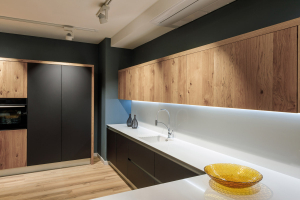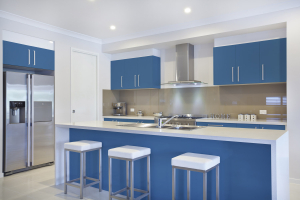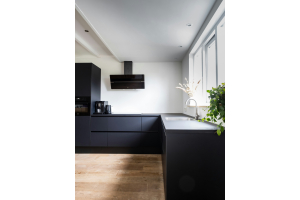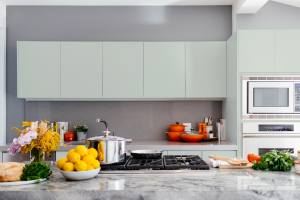Any homeowner or interior design expert will tell you that kitchen cabinets, especially the doors under the sink or refrigerator, endure a lot of stress. They are typically made using materials like MDF and solid materials that show wear and tear over time, even the more lavish European cabinet doors. For one, water from your sink and high humidity levels can damage or make cabinet doors look worn out.
Cabinet doors damaged by water can also become swollen–this is why it’s important to understand some basic concepts about the ideal thickness of MDF cabinet doors. Water can also cause paint to chip off or laminate to pop, which can ruin the finish on cabinets. In some cases, you may notice that a laminate surface is beginning to bulb due to water damage from inside the cabinets.
Keep in mind that water damage is one of the leading causes of wear and tear to cabinet doors. As a result, once you notice it, you need to make repairs as soon as possible before the damage gets any worse. Even though solid wood is better known to survive exposure to water, it can reach a point where the cabinets become unsalvageable. Sometimes, homeowners might use waterproof materials to protect their kitchen cabinets and prevent future damage; these potential issues are why homeowners should understand the benefits of MDF for kitchen cabinet doors.
In this article, we will examine some of the best ways to repair kitchen cabinet doors that have been damaged in one way or another. We will also look at some of the possible ways that you can protect your cabinetry moving forward.
Replace Latches When Doors Are Not Closing Properly
Most new home kitchen cabinets come with self-closing hinges that ensure the doors remain shut. Some pieces use magnetic or roller catches because of their effectiveness or because of personal preference. Should any latches become damaged, you can either replace the existing latches or adjust the ones you already have, depending on the extent of the problem.
Repair Broken Hinges
If any of the hinges on your kitchen cabinet doors come off, then the best thing you could do is repair them with some gap-filling glue. Start by removing the hinge from the damaged door, then apply a bit of petroleum jelly to the movable components of the hinge to protect them from the glue.
Scrape the hinge section that will have contact with the glue, so it sticks more firmly. Continue to apply the glue to the damaged area of the cabinet door and then promptly reinstall the screws and hinge. You can use weights or clamps to help keep the hinge in place as the glue dries.
Try to Fill Stripped Screw Holes
Although a stripped screw hole may seem difficult to fix, this is not the case. It is, in fact, a reasonably straightforward process. Start by removing the screw and the cabinet door knob. Then dip some toothpicks in wood glue and place as many as possible into the hole. Once you are through, break off the toothpicks and do away with any excess adhesive. Put the door knob back by screwing it directly into your broken toothpicks.
Touch Up Scratches and Nicks
Most homeowners can’t stand the thought of unsightly scratches or nicks on their kitchen cabinet doors. However, it is not always possible to refinish all the cabinetry. In that case, you can use a stain-filled touch-up marker to hide the scratches; you only need to dab the marker on the scratch and eliminate any excess stain.
Something else to keep in mind is to use a slightly lighter marker than the color of your existing cabinets. The reason is that cabinet scratches and nicks tend to absorb stains very easily and may appear darker than the rest of your cabinetry doors if you use a darker repair shade.
In Conclusion
No one wants damaged kitchen cabinet doors, especially if they spent a fortune installing them. The steps mentioned above can help you sort out minor issues with your cabinetry, but you should never hesitate to call professionals if you feel a problem is too much for you to manage.






